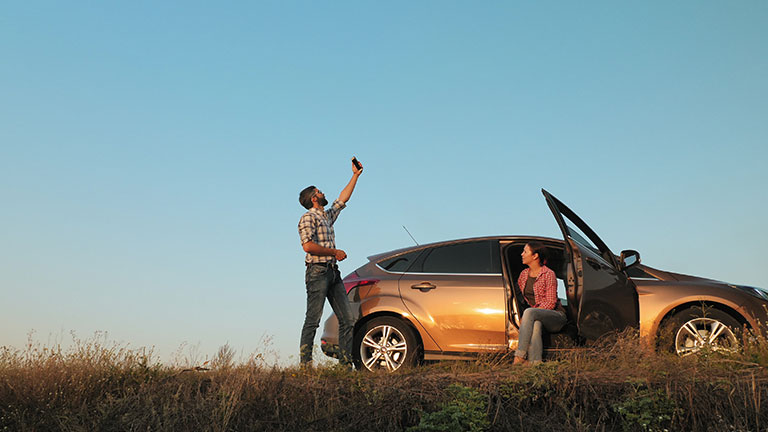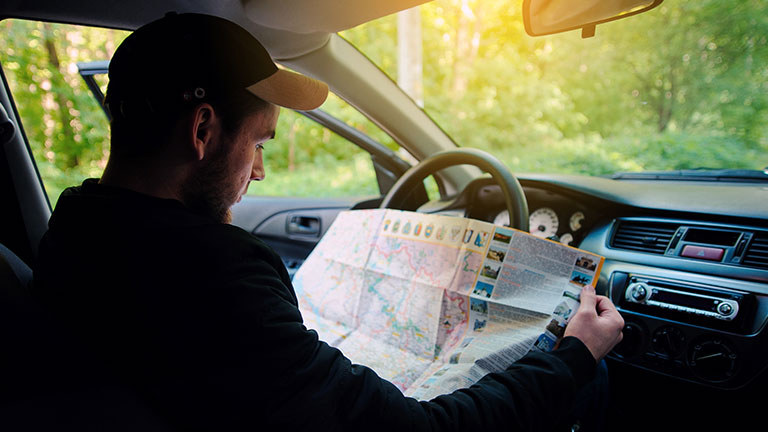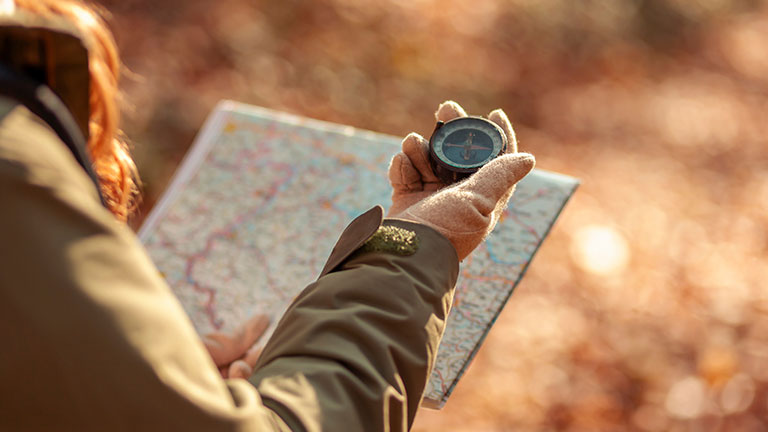Our phones are so intertwined with our lives that it’s hard to get through a conversation without reaching for one to look something up. So when we lose service, we can feel helpless—or worse, be put in real danger.
“A mistake is thinking your cell phone is your emergency plan,” says Katie Baum Mettenbrink, Risk Management director at the National Outdoor Leadership School. “Cell phones can do many things, but you can’t eat them, they don’t keep you warm, and they certainly can’t help you walk with a broken ankle.”
This is why road trip safety tips that go beyond your phone are essential. While some of the latest smartphones now support SOS satellite communications, there are still plenty of reasons your phone might fail you when you need it most. To help you prepare, here are some key tips for surviving without cell phone service.

Why you might lose cell phone service
It’s not just about driving through remote areas; there are many reasons you might find yourself without service. Phones can get lost or damaged, charging ports may become clogged, or you might simply forget to pack a charging cable. In more serious situations, such as natural disasters and large-scale emergencies, cell towers might be destroyed or overwhelmed, making it impossible to connect.

How to prepare for being without cell service
As part of your road trip safety tips checklist, assume that you may lose service, and plan accordingly. Here’s how to be ready:
- Bring a paper map and compass, and mark the route you plan to take.
- Carry cash or physical credit cards; don’t rely solely on your digital wallet.
- Pack an emergency road kit, including warm clothes, water, and basic supplies.
- Check the weather forecast, and know what kind of terrain to expect.
- Consider taking a wilderness first-aid or EMT course to build essential survival skills.
- Invest in a GPS tracker with two-way messaging, such as SPOT or Garmin inReach.
- Share your itinerary with someone you trust.
“This last point can’t be understated,” says Kevin Micsko, vice president of Automotive Operations for AAA Club Alliance. “Always share your route, destinations, and estimated travel times so someone can sound the alarm if you are overdue.”
If you’re headed into a remote area, take note of where your signal drops so that you’ll know where to backtrack in an emergency. If you’re meeting friends, designate a place to leave messages, such as a campground bulletin board or a trail junction.
If you’re headed into a remote area, take note of where your signal drops so that you’ll know where to backtrack in an emergency.And if you’ll be off-grid for a while, switch your phone to airplane mode. Your battery will last longer when your phone isn’t constantly searching for a signal.

Navigating without cell service
Knowing how to use a compass and read a paper map is essential when you’re off the grid. Use topographic lines and landmarks—such as mountains, rivers, and valleys—to determine your location and plan your route. If you’re hiking, pay attention to your surroundings, and monitor your energy to gauge when it’s time to turn back.
Planning a road trip with a paper map can also be surprisingly rewarding. Print atlases often highlight scenic routes, historic sites, and natural attractions not always noted on digital maps. You can find state and regional paper maps at AAA Stores or download them from the AAA Map Gallery. Or tap the AAA TripTik tool to create custom travel routes and printable maps.

What to do if you break down without service
First, stay calm. If it’s safe, step outside and look for a clear view of the sky and horizon, as your phone may still pick up an emergency SOS signal even without regular service. Your car’s navigation and emergency system may also be able to connect.
If that fails, the safest option in most cases is to stay with your vehicle. Your car provides shelter and is much easier for rescuers to locate than a person on foot. Only consider leaving your vehicle if you’ve assessed the situation carefully and are confident it’s safe to do so. Make sure you have a clear destination within walking distance, daylight remaining, favorable weather, and the proper gear—including a printed map, compass, and emergency supplies. Also, let someone know your intended route, if possible.
It can feel unnerving to be without your cell phone lifelines suddenly, but when that happens, stay calm and call on these road trip safety tips—and your inner wisdom. Your resourcefulness might just surprise you.

